Top 9 Etiquette Rules for Vietnam’s Cultural Sites
Vietnam is a country steeped in history, rich traditions, and deep cultural values. From the ancient citadels of Hue to the war relics in Ho Chi Minh City and sacred pagodas, each site tells a story that has helped shape the identity of the Vietnamese people. But to truly appreciate these places, it’s essential for travelers to approach them with cultural sensitivity and respect.
Whether you are a history buff or a curious traveler, following proper etiquette ensures a more meaningful experience, and avoids unintentional disrespect. Here’s a guide to cultural etiquette when visiting museums and historical sites across Vietnam.
Dress Respectfully
One of the first things to be mindful of when entering museums and historical or religious sites is your attire. Vietnam is a modest country, especially in spaces considered sacred or of national importance.
- Wear clothing that covers your shoulders and knees. Short shorts, sleeveless tops, or revealing outfits may be considered inappropriate.
- If you’re visiting temples or mausoleums (such as the Hồ Chí Minh Mausoleum in Hanoi), long pants or skirts and shirts with sleeves are strongly recommended.
- Comfortable shoes are encouraged, especially when visiting larger complexes or sites with uneven terrain.
Traveller Tip: What if you forget and wear something too short? Just carry a lightweight shawl or scarf in your bag. It’s useful for both sun protection and covering up when needed. You can also look for nearby outfit rental services.
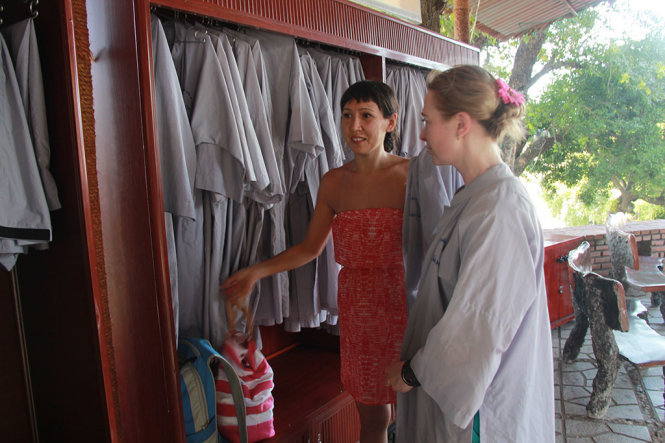

Visitors to Ngoc Son Temple, Hanoi can now borrow a coat if they don’t come prepared. Cre: moitruongdulich

Young people immerse themselves in Vietnam’s history and culture by renting and wearing traditional outfits from local services. Cre: khamphahue
Be Aware of Photography Rules
Vietnam’s historical sites and museums often feature delicate artifacts or sacred symbols. While snapping a photo can be tempting, it’s crucial to respect each site’s rules regarding photography.
- Look for signage indicating where photography is permitted. Some areas may prohibit it altogether, while others may allow it without flash.
- Don’t take photos of worshippers inside temples or pagodas, and avoid interrupting ceremonies.
- Avoid selfies or inappropriate poses in solemn places like war memorials for grave sites, these are often seen as disrespectful.
Traveller Tip: If you’re unsure, ask a staff member or guide before taking out your camera.


Long Bien Bridge in Hanoi, once a favorite Instagrammable spot, now displays a sign banning filming and photography to ensure tourist safety. Cre: Kenh14
Keep Noise to a Minimum
Vietnamese culture values harmony and respect in public places. Museums and historical sites are places of reflection, learning, and reverence.
- Speak in hushed tones or keep your conversations minimal.
- In sites associated with war or tragedy, like the War Remnants Museum or the Củ Chi Tunnels, treat the environment as you would a memorial: with quiet reflection.
Traveller Tip: If you can, put your phone on silent mode and avoid answering calls unless necessary. Use earphones for audio guides or translation apps. If you’re traveling with kids, prep them ahead of time about the need for quiet in these environments.
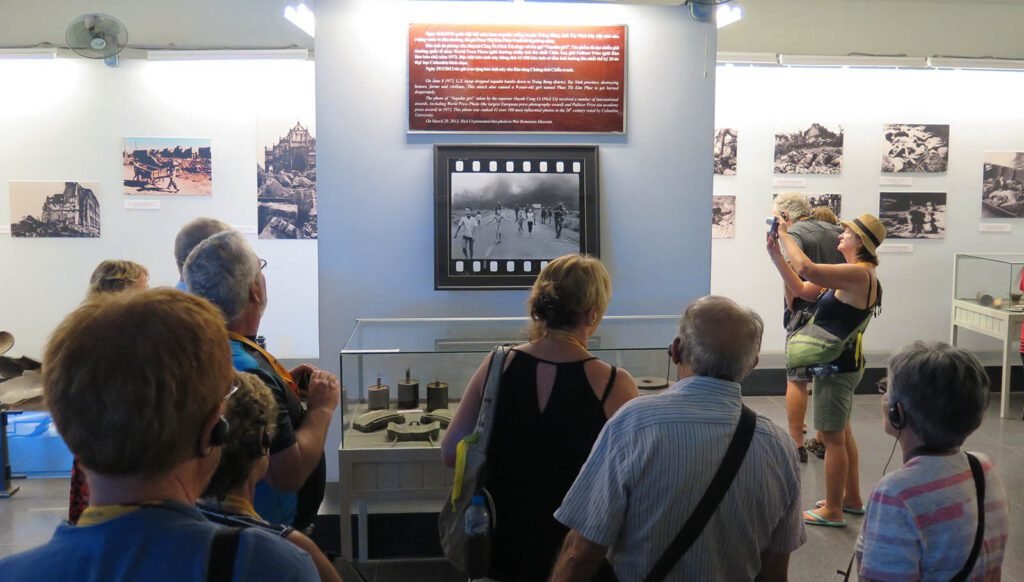
Each historical piece in the War Remnants Museum in Ho Chi Minh City is equipped with a QR code that visitors can scan for an audio guide.

A young visitor uses headphones to listen to audio guides at the Hoa Lo Prison Relic.
Cre: nhatuhoalo
Follow the Flow and Instructions
Vietnamese museums are often designed to tell a story as you move through them. Historical sites also frequently have designated paths to preserve the site and manage visitor flow.
- Follow the signage and designated walkways. Avoid stepping over ropes, crossing barriers, or walking into restricted zones.
- Do not touch artifacts or displays unless specifically permitted. Oils and dirt from hands can damage centuries-old materials.
- In large groups, allow room for other visitors to move comfortably and enjoy the exhibits.
Traveller Tip: Treat museums like galleries, follow arrows and designated paths even if they seem longer. They’re designed to protect exhibits and enhance your learning experience. Don’t duck under ropes or barriers for a shortcut or photo.
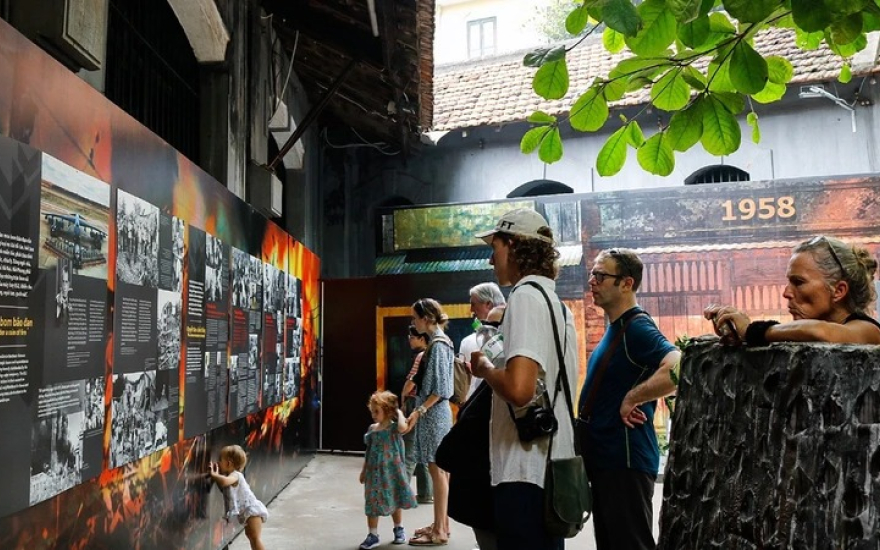
When visiting cultural sites with children, it’s helpful to explain in advance the importance of silence and respecting exhibits by not touching them. Cre: baonhandan
Show Reverence at Sacred or Commemorative Sites
Vietnam’s history is complex, and many historical places are deeply tied to collective memory and national identity. Some sites, especially those related to wars of independence struggles, carry a sacred status for many Vietnamese.
- Places like the Ho Chi Minh Mausoleum or Dien Bien Phu Historical Site are not just attractions, they are symbols of national pride. Maintain a solemn and respectful demeanor.
- Stand still during flag ceremonies or other official activities. Visitors may be asked to remove hats or stand silently during these events.
- At temples and pagodas within historical complexes, remove your shoes before entering and avoid pointing your feet toward altars or Buddha statues.
Traveller Tip: Observe how locals behave, if they remove hats, stand in silence, or bow slightly, you should too. Even a simple posture of stillness and quiet is a respectful way to honor the space.
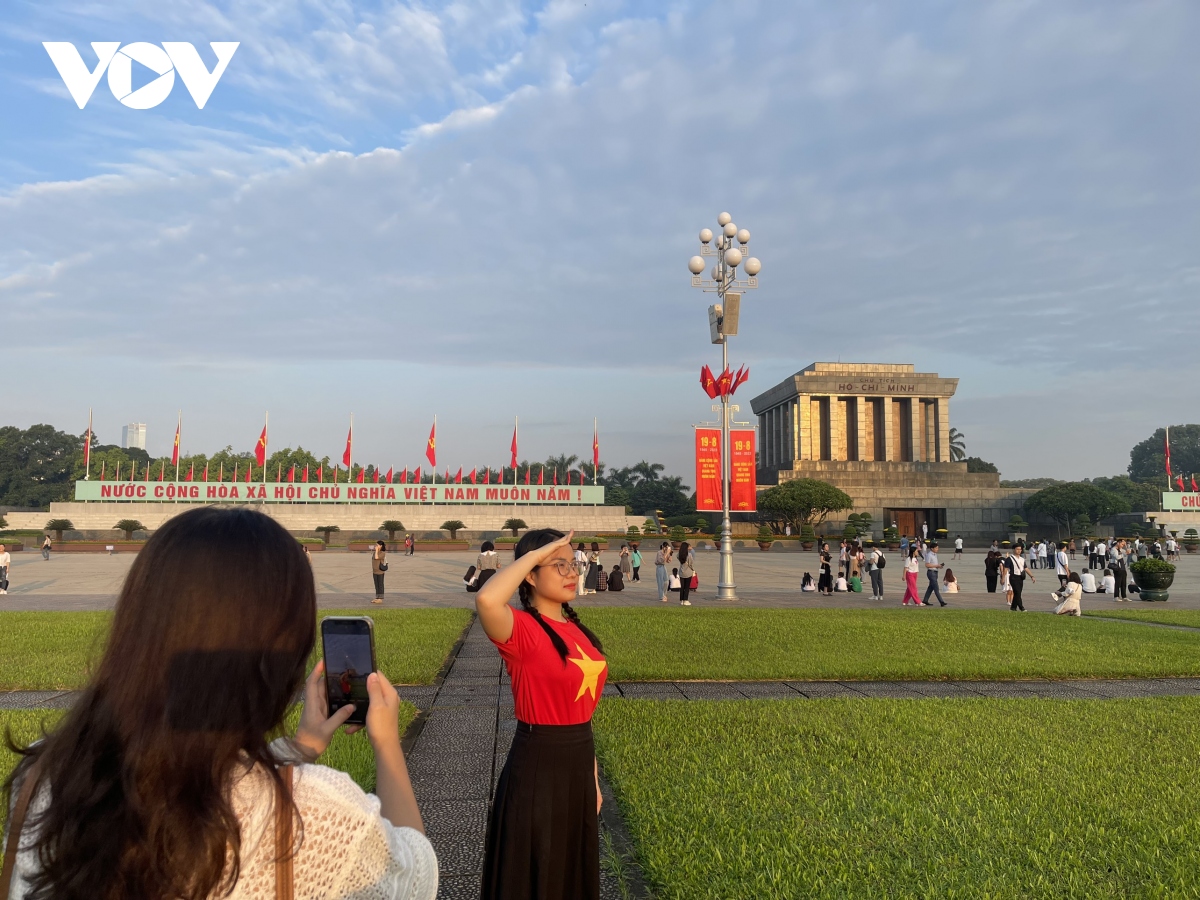
Young people salute during the flag-raising ceremony in front of the Ho Chi Minh Mausoleum. Cre: VOV
Be Respectful of Space and Time
Vietnamese culture places high value on community and personal space.
- Avoid blocking exhibits while reading information, step aside when done.
- Be patient in lines, especially during weekends or public holidays when sites are more crowded.
- Don’t rush through experiences. Taking time to understand the significance of each place often earns the appreciation of local staff and fellow visitors.
Traveller Tip: If you’re visiting during peak hours, try to be brief and keep the flow moving for everyone’s benefit.
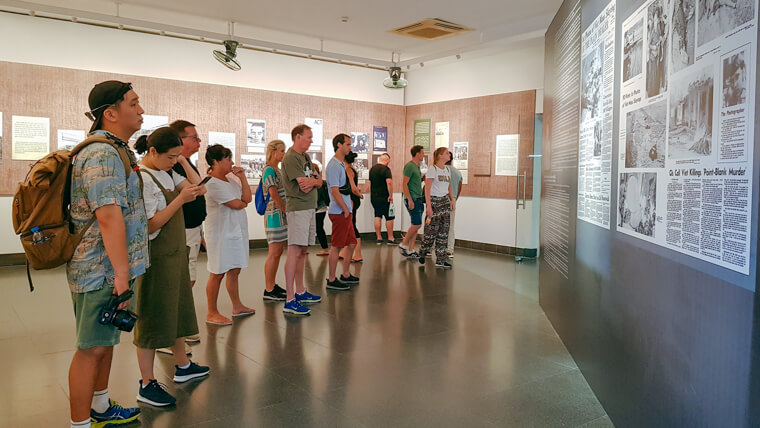
Tourists respectfully wait in line, reading the historical displays at the War Remnants Museum. Cre: Vietnam
Engage With Local Guides and Staff Politely
Many Vietnamese museums and historical sites offer tours in English or have on-site staff who are knowledgeable about the exhibits.
- Be courteous when asking questions. A warm smile and a polite “xin chào” (hello) or “cảm ơn” (thank you) go a long way.
- If using a private tour guide, allow them to speak and share the narrative without frequent interruption.
- Don’t bargain for entrance fees, prices are typically fixed and affordable.
> Read More: 30 Common Vietnamese Phrases for Tourists
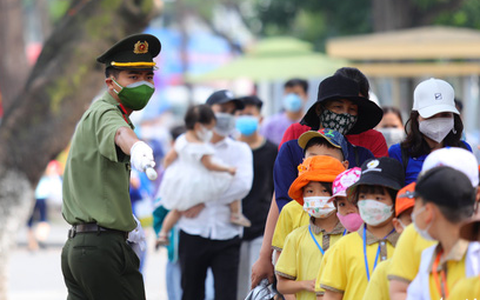

Seek assistance from on-site staff or officers if you need help. Cre: baotuoitre.
No Food, Drinks, or Smoking
Maintaining cleanliness is a shared responsibility.
- Most museums in Vietnam do not allow food, drinks, or chewing gum inside the exhibit areas.
- Smoking is strictly prohibited in indoor or sacred spaces.
- Dispose of any trash in designated bins to help preserve the site.
Traveller Tip: Finish your snacks or drinks before entering. Keep a reusable water bottle in your bag but don’t bring it out unless you’re in designated rest areas. Carry a small trash bag if you’re unsure about local bin availability.

Carry a small trash bag if you’re unsure about local bin availability.
Be Culturally Curious, But Mindful
Vietnam’s rich tapestry of ethnic groups, dynastic history, and colonial past is reflected in its museums and historical narratives.
- Embrace learning with an open mind, even when information differs from what you’ve read elsewhere.
- Avoid making jokes or comparisons that may seem dismissive.
- Try to understand the local context. For example, war-related museums may present perspectives that reflect national sentiment.
Traveller Tip: Ask open-ended, respectful questions, “How is this event remembered today?”, instead of challenging perspectives. Reading a bit about Vietnam’s history before your trip can help you engage with empathy and insight.

The ‘Sacred Night’ show at Hoa Lo Prison Relic leaves a deep emotional impact on every visitor. Cre: nhatuhoalo
To Wrap Things Up
Visiting Vietnam’s historical sites is a deeply meaningful and enriching experience. By preparing thoughtfully, showing respect through your behavior, embracing knowledge with an open mind, and paying special attention at war-related sites, travelers not only enjoy a memorable journey but also contribute to the preservation and appreciation of Vietnam’s rich historical and cultural heritage.
Traveling with understanding and empathy enhances the depth of your experience and shows genuine respect for the history and people of the places you visit.
Want to explore Vietnam with cultural depth? Let My Vietnam Tours guide your journey with expert-curated experiences. Discover our History and Culture tours across Vietnam and Contact us today to start planning your meaningful adventure!

